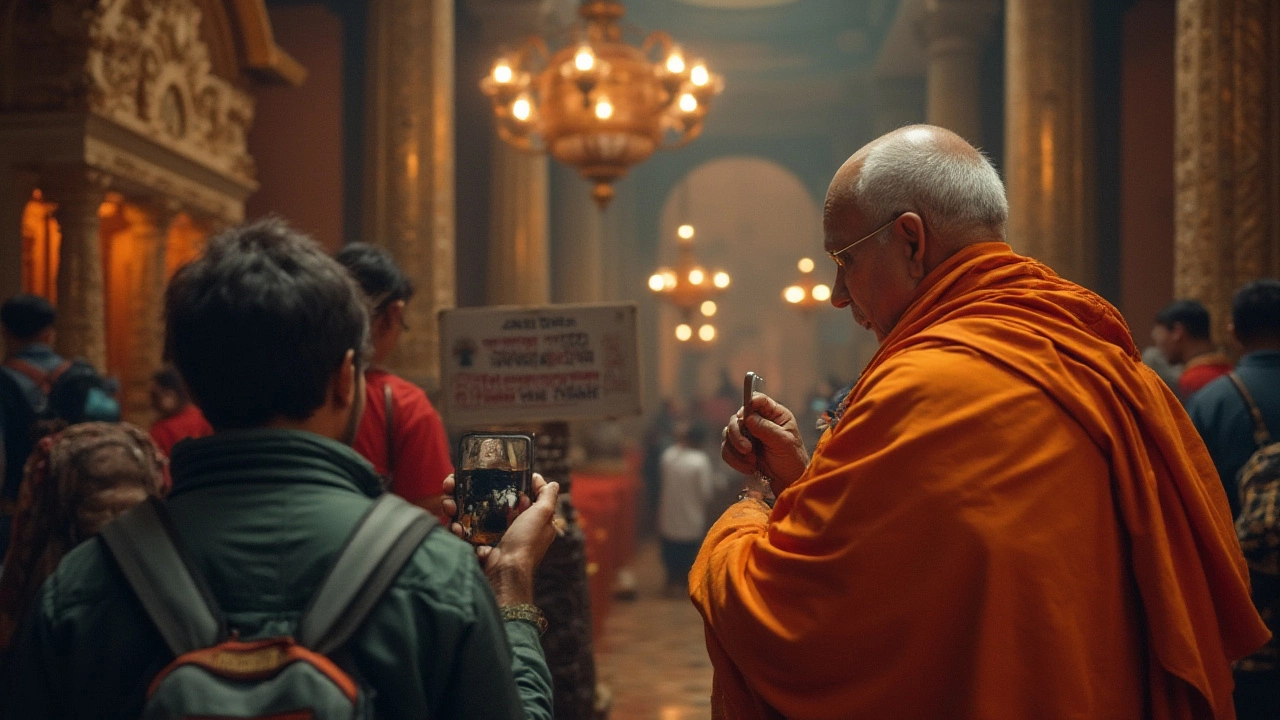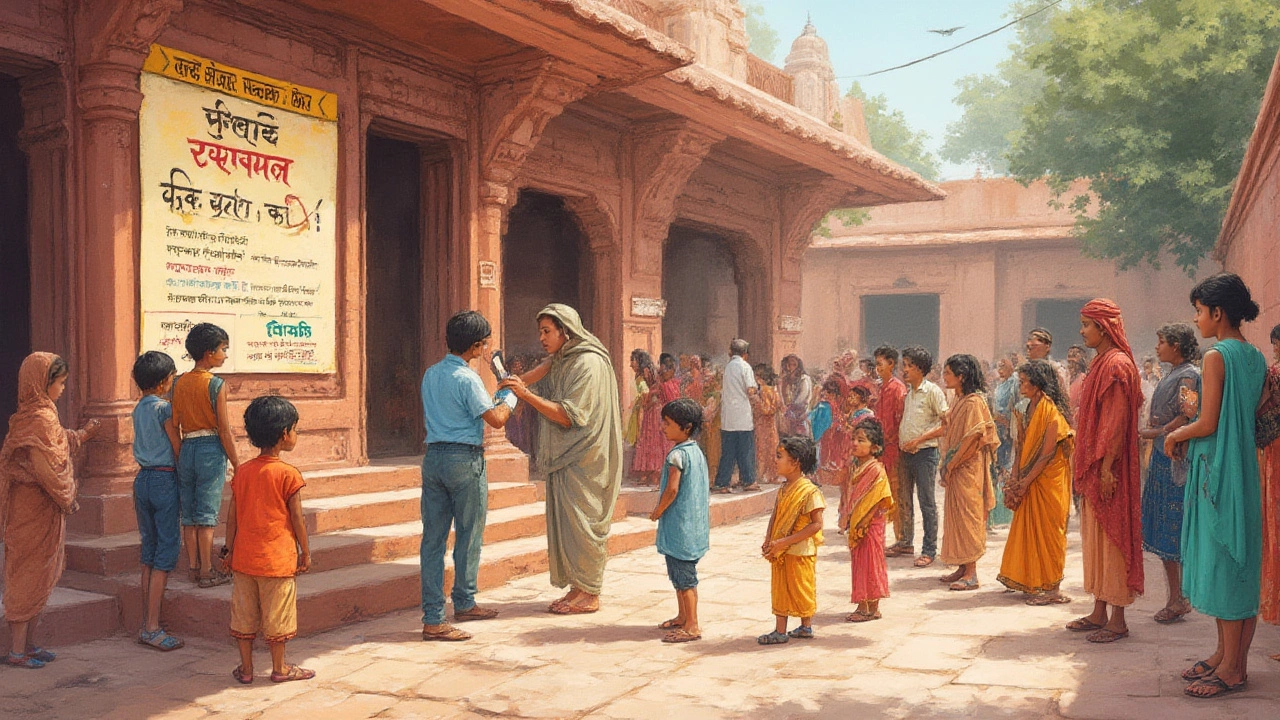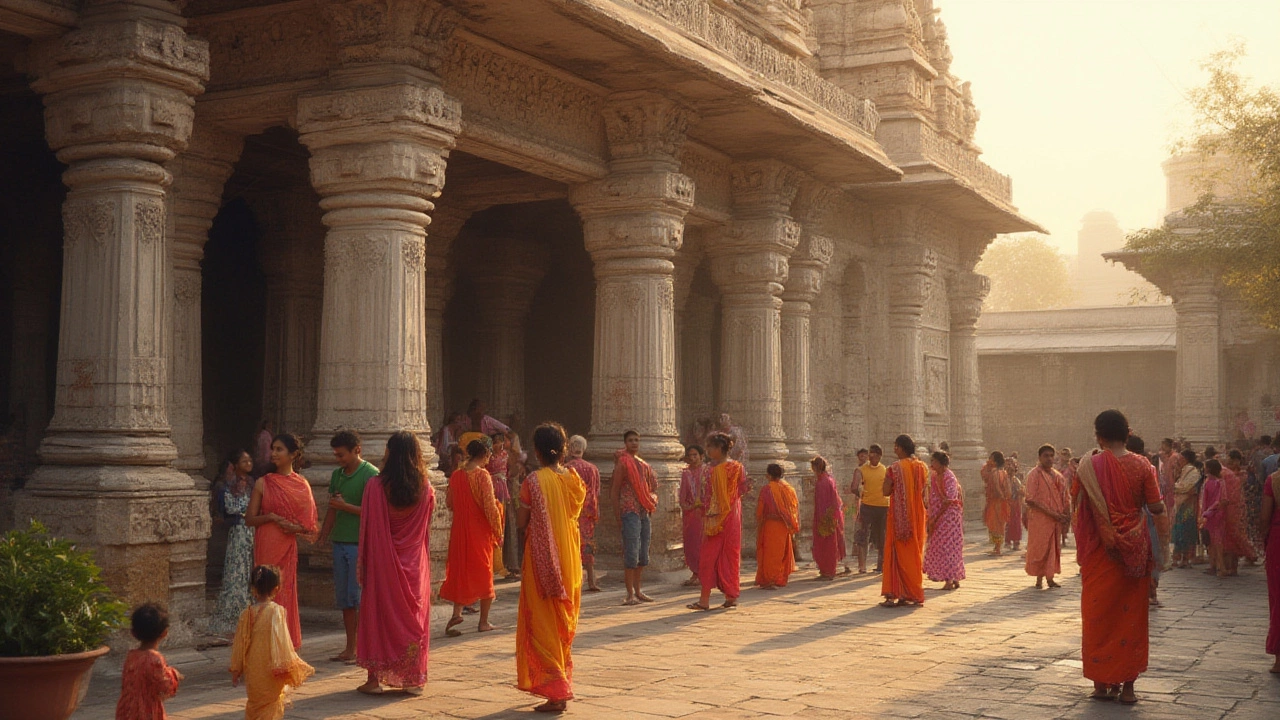Step into a temple in India and you’ll get hit with a wave of incense, chanting, and color. The atmosphere grabs you, demands respect, and there’s this unspoken, intricate code everyone seems to follow. You see locals bowing, weaving through the crowd, slipping off shoes, whispering prayers. Then, there’s the hopeful tourist, trying not to stick out like a sore thumb but making every rookie mistake possible—talking loudly, snapping selfies, sitting in the wrong spot. This is where it all matters: knowing what not to do. Not just for the sake of respect, but if you don’t want security or priests politely asking you to leave—or worse, scolding you in public.
Understanding Temple Etiquette: It’s Not Just About Faith
Temples in India aren’t just spiritual sites; they’re living, breathing hubs of culture and community. Millions visit them for festivals and daily prayers, but even more for simple, quiet moments. There’s a reason why people keep their heads bowed even after walking out the door. It’s that sense of reverence your school principal used to talk about, but here, it’s real, and people care. Temples usually have centuries-old traditions that dictate every little action—where to stand, what to touch, which way to walk, and when to keep quiet. Missing these silent cues isn’t just embarrassing, it can feel like crashing a sacred concert.
The unwritten rules are deeply rooted: don’t enter with shoes, avoid stepping on thresholds, never turn your back to the deity, and leave that phone alone. It’s not just about preventing dirt or noise; there’s symbolism in every gesture. In fact, researchers at the Archaeological Survey of India say over 70,000 temples are currently active across the country, with each having its own quirks. For instance, in Puri’s Jagannath Temple, non-Hindus aren’t allowed inside at all, no matter how much you beg security. Down South, at the Sabarimala temple, there’s a famous restriction on women of menstruating age—something outsiders struggle to wrap their heads around. The reasoning isn’t always obvious, but trust me, people are watching, and missteps stick out more than you might think.
But don’t let it freak you out. Temple etiquette isn’t about perfect performance—it’s about showing respect with small gestures. Keeping that in mind goes a long way. And if you really want a shortcut? Watch what the grandmas and uncles do. If you copy them, nobody will mind. Locals often help when they see genuine curiosity, but careless or entitled behavior? That’s where they draw the line fast. If you’re in doubt, silence is usually golden in temples. One quick tip: if you’re handed a flower or sweet as prasad, don’t refuse it. It’s a small but meaningful symbol of acceptance.
The Dress Code: Cover Up and Blend In
If you remember just one thing before entering a temple: dress like you mean it. This isn’t just a fashion suggestion—clothes are a sign of respect in Indian temples, and nearly every one has a written or unwritten dress code. Bare shoulders, shorts, or tight outfits? Big mistake. In some places like the Meenakshi Temple in Madurai or Guruvayoor in Kerala, security will literally turn you away if your knees or shoulders are showing. The rule applies to both guys and girls—no exceptions. For men, trousers or dhotis (the Indian wraparound cloth) and shirts with sleeves work best. Women usually go for a saree, salwar kameez, or at least something with a scarf that covers the head and shoulders. Western travelers sometimes worry about finding Indian outfits, but most temple towns have street vendors lending or selling simple cover-ups for a dollar or two.
Footwear is non-negotiable: you leave your shoes (even socks, hats, or leather belts in stricter places) outside, usually near the entrance. Many temples forbid leather anywhere near the grounds, so those fancy leather wallets or bags? Leave them at your hotel. In Buddhist shrines, keeping silent and covering your head is a sign of humility, while in Sikh gurdwaras, both men and women must cover their heads with a scarf—which volunteers often hand out for free. Meanwhile, going shirtless is sometimes required for men at temples like the Guruvayoor or in Kerala, but if in doubt, just follow the crowd. Modesty is the golden ticket here.
Here’s a quick reference for temple attire:
| Temple Region | Men | Women | Extras |
|---|---|---|---|
| North India | Trousers, Long Shirt | Salwar Kameez, Saree | Shoes off, Occasionally head cover |
| South India (Tamil Nadu, Kerala) | Dhoti/Lungi (sometimes shirtless) | Saree, Long Skirt | No leather items, Footwear off far outside |
| Sikh Temples | Any modest clothing, Head covered | Any modest clothing, Head covered | Scarf or cloth often provided |
Think of temple-friendly dressing as dressing up for dinner at your partner’s grandmother’s house. Better safe and overdressed than underdressed and embarrassed. There are usually clear signs at most tourist-heavy temples, but if you don’t see one, just check out the regulars and copy what you see. You’ll blend right in and might even score some approving nods from the elders.

Mistakes that Stand Out: What Not to Do Now and Always
It’s not just about what you should do. The biggest blunders usually happen when people act like the temple is just another tourist spot. Loud talking echoes for miles, so keep voices at library level or lower. Definitely don’t eat or drink inside, even if that heat is boiling your brain. Food and drinks break the sanctity, unless it’s the prasad (offering) handed by priests inside. Refrain from bringing in pets; animals are almost always a strict no-go unless it’s Gomata—the holy cows sometimes find their own way.
Photography is a landmine. Some temples allow photos in outer courtyards or gardens, but keep that camera well away in sanctum areas. Many temples post warning signs in English and local languages. At the famous Padmanabhaswamy temple or inside Tirupati, one flash and you could be escorted out. It’s not just about privacy; many believe flash photos disturb the divine energy. If you do get a green signal, be discreet and never photograph people praying without asking. People really mind their privacy when it comes to faith. Keep phones on silent or, better, switched off. That ringtone—even if it’s a catchy Bollywood tune—won’t win you any friends here.
Hygiene also matters a lot. Don’t bring food wrappers or plastic bottles. Littering is nearly a sin inside temple grounds, and most have big bins marked for offerings and waste. Avoid touching idols, shrines, or holy books; only trained priests handle these. If you notice people washing their hands and feet before entering the inner halls, follow suit. No point staring blankly when everyone else lines up for a ritual cleanse at the door. A small donation box is always somewhere near the main exit, but don’t wave around cash or expect loud declarations of your generosity. Slip your donation quietly, and move on—locals tend to do the same.
Another pitfall? Wandering into restricted zones. Many temples have areas reserved only for priests, or for certain rituals. Often, these are marked with signs or chains, but not always. If you’re unsure, just ask. Also, if you see people walking circumambulations (clockwise circles) around shrines, join them or at least keep out of their way. The direction and order matter—don’t attempt new-age freeform exploration here. And if you’re traveling as a couple, skip the hand-holding or public displays of affection. It’s not just frowned upon—it’s scandalized. Even taking calls is a no-no near prayer halls. People come to temples with real problems, hoping their prayers are heard—show you’re not just passing through for an Insta post.
Tips from Temple Regulars: Blending In the Right Way
There’s clever stuff you’ll only pick up from watching old-timers and temple regulars. For starters, walk in a steady, measured manner—never run or skip around. When in doubt, observe and mirror the person in front of you. Most locals keep palms pressed together in a namaste gesture when entering and leaving. Watch for timing too—early mornings or late evenings can mean crowded events; if you want quiet, midday works best but the sun can be relentless. Plan accordingly.
Pay attention to lines: there’s usually an orderly queue for darshan (the chance to view the deity), and cutting in is a big faux pas. At festival times like Holi, Navratri, or Diwali, things can get hectic. Authorities often double security and crowd control, so follow instructions to the letter, especially in popular temples like Varanasi’s Kashi Vishwanath, which gets more than 3 million visitors a year during Shivratri. Don’t bargain with street vendors right at the temple door—it’s seen as disrespectful during religious days.
Here’s another smart insider move: when you’re offered a breakable coconut, a garland, or sweets as offering, accept it using your right hand. The left hand is seen as unclean in temple rituals. And if seeking blessings from a priest, let him touch your forehead with the holy mark (tilak)—don’t try to do it yourself. Respect that every temple has its own rhythm, so if you notice something confusing, stop and let others go before you. You’ll stay out of trouble and add a layer of authenticity to your experience.
For those with physical difficulties, wheelchairs are allowed in most tourist-friendly temples but check ahead. There are also places where you’ll climb hundreds of steps (Tirupati has 3,550!), so ask about alternatives before heading out. Noise isn’t just rude; it drowns out the core rituals. Silence, for many, isn’t absence—it’s part of the prayer. Want to score real brownie points? Volunteer at the temple’s community kitchen or help with cleanup—locals love it when guests contribute.

Temple Visits: The Lasting Impact of Doing It Right
Following temple manners sounds complicated, but once you see the effect, it feels like second nature. It’s about absorbing centuries of tradition and layering your own curiosity on top. That blend is what makes visiting temples in India unforgettable. You tap into history, belief, and the pulse of the place—getting just a bit closer to what brings millions there every year. And you don’t just stop at the main temple. Many towns have satellite shrines and festivals that spill out into the streets—so your experience can grow if you start off on the right foot.
Truth is, temple rules have a practical effect too. Less chaos, smoother lines, less mess. According to a 2023 report by India’s Ministry of Tourism, seven of the top ten most-visited tourist sites in the country are religious—meaning temple etiquette shapes nearly every aspect of travel. Nobody expects you to know every ritual or chant, but a little effort goes a long way. That means dressing the part, showing patience, and showing up with an open mind, ready to learn.
You remember temples not for their strictness, but for the kindness of strangers who help when you’re lost, or the peace you feel after stepping outside. Give respect, you get respect back. Don’t just see Indian temples—experience them by flowing with their rules. Soon you’ll find you’re not just visiting a place, but becoming part of its living tradition.
